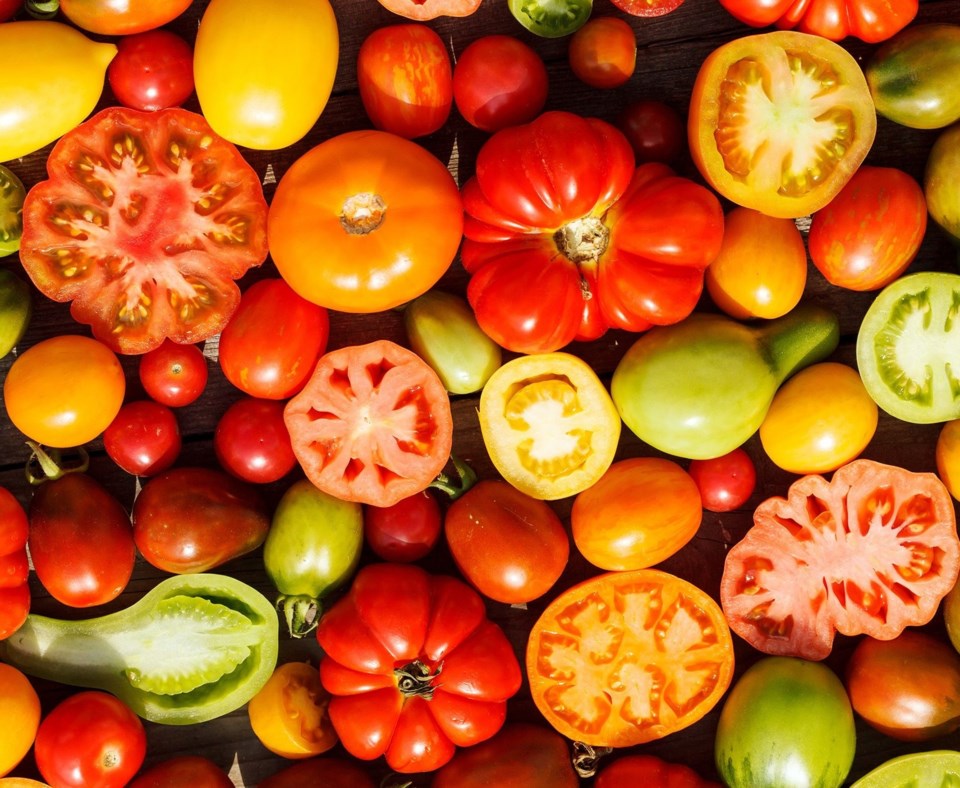Last week we introduced the topic of saving seeds and delved into the world of pollination. We introduced the concept of needing to grow open pollinated plants that are also known as heirloom or heritage plants. So, let’s continue our discussion so we can all be ready to grow open pollinated plants and save some seeds.
Much of what we commonly grow in the garden are seeds that are hybrids. There are seeds resulting from what is considered a terminal cross as the two parent plants that were crossed resulted in the production of a seed that is superior to the parent plants in some way. Plants grown from the hybrid seed are often faster growing, with more colour or bigger fruit or simply better disease resistance. However, if you save the seed from these hybrid plants, the seed will not produce a plant or a product that is the same as what you grew.
Heirloom seeds can be saved and planted year after year. Although they are naturally pollinated, they will produce seeds that are “true” and thus when collecting this seed, you will have the opportunity to grow a plant that is similar to the parent plant. When a seed is described as “coming true,” it will grow, flower, and produce fruit that looks like the parent plants. Seed that does not ‘come true’ will often be seed that has two different parents from the same plant family. For example, green beans will cross-pollinate with yellow beans resulting in beans that can be either green or yellow or some combination of both colours. When planting a garden to use for seed production, remember it is important to plant single varieties of those plants you plan to save seed from. Planting only non-hybrid green beans will mean you will have green bean seeds that will produce true green beans the following year. Keep in mind that if your neighbour is growing vegetables, there can also be cross-pollination between their varieties of vegetables and yours. Maybe you can go together and each grow different types of vegetables but then share the produce. You’ll have double the garden space, more vegetables and new friends for life.
Therefore, if your goal this growing season is to save your own seed, then it is important for you to plant seed that is considered heirloom or heritage and those plants will be open pollinated and come true the next time you grow them. Do some research, or ensure you do not miss these articles on how to save seed in your garden. It will be necessary to understand how pollination works for the plants you wish to save seed from and to follow the processes to allow you to successfully harvest viable seed.
In my garden, I usually grow a combination of hybrid and heirloom plants. Often some of the heirloom plants will be better producers than the hybrid plants. I like to use the tomato as an example. Tomatoes are hot crops and like to see warm, sunny days for best production. However, some of the heirloom tomatoes that I always grow thrive when the weather is cooler. I figure that as I do not have the power to dictate the weather, if I grow tomatoes that thrive in hot weather and some that thrive is cooler weather – I am guaranteed a tomato crop.
Watch next week for more on the magic of pollination and more on how to save your own seeds.
Hanbidge is the Lead Horticulturist with Orchid Horticulture. Find us at www.orchidhort.com; by email at [email protected]; on facebook @orchidhort and on instagram at #orchidhort.
Tune into GROW Live, weekly on our Facebook page https://www.facebook.com/orchidhort or check out the Youtube channel GROW https://www.youtube.com/channel/UCzkiUpkvyv2e2HCQlFl0JyQ?




